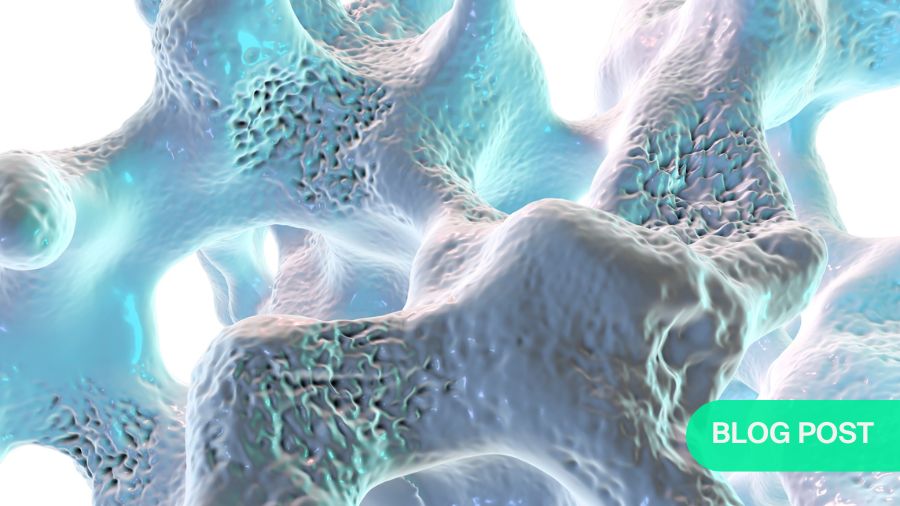Osteoporotic Fracture Classification System in action
BY DR KLAUS SCHNAKE

The global population aged over 65 is steadily increasing both in numbers and proportionally. This is leading to a surge of osteoporotic fractures. We will see double, triple, or even quadruple numbers of osteoporotic fractures in the future—you could even call it a tsunami of osteoporotic fractures coming towards us! The Osteoporotic Fractures (OF) Classification System helps clinicians in their surgical decision making and ongoing patient assessment.
What we already know from our own studies, is that the most common fracture types are either A1 or A3, according to the AO spine classification. These are either incomplete burst type fractures or endplate fractures. B and C type injuries as well as neurological deficits are rare. Progressive kyphosis is common, especially if the T-score is less than minus three. Surgically important comorbidities are quite frequent, up to 40%. Only 20% of inpatients in our study could be treated sufficiently with pain medication, and one third of the patients remain bedridden.
The AO Spine-DGOU Osteoporotic Fracture Classification System
Over the last 40–50 years, numerous classifications on osteoporotic fractures have emerged. None of them, however, met with our surgical needs. So, to develop a new classification for spine surgeons’ purposes, the German Orthopedic and Trauma Society founded an Osteoporotic Fracture Working Group in 2012.
We undertook extensive literature research as well as attended numerous consecutive expert meetings with a group of 40 trauma surgeons from German-speaking countries. In the end, we proposed the new OF classification and a scoring system to go with it. We did a reliability study of the classification with more than 140 fractures rated by six experienced surgeons.
Our classification of osteoporotic vertebral fractures divides the fractures into five subgroups according to deformation:
- OF1 – No deformation. The fracture can only be seen in the MRI sequence with the vertebral body edema.
- OF2 – Deformation of one endplate without or with only minor posterior wall involvement
- OF3 – Deformation of one end plate with distinct posterior wall involvement.
- OF4 – Deformation of both end plates with/without posterior wall involvement.
- OF5 – Injuries with anterior or posterior tension band failure.
Further detail on these classifications can be found here.
Scoring the most important parameters for surgical decision making
To cover the important parameters for your decision making, we have produced a scoring system for the fractures. It captures the severity of osteoporosis, whether they have kyphosis progression, how much pain the patients have, whether they have neurological symptoms, and whether they can be mobilized. The AO Spine Knowledge Forum Trauma will conduct an observational study to evaluate if following the scoring system—which informs treatment decisions—accelerates the time the patient need to return to pre-injury mobility status.
For assessing patient, the OF score can be used to grade the severity of osteoporosis. You can either use the T-score—less than minus 3 means a severe osteoporosis—or use a quantitative CT scan, where we set the threshold to 90 Houndsfield units. Kyphosis progression may occur over time. If pain despite analgesia is more than five on VAS, treatment is not sufficient. Neurological symptoms according to the AO Spine Classification mean either radiculopathy or incomplete or complete neurological deficit, which is probably an indication for surgery. Mobilization, despite analgesia, is very important for the patient, too. Can the patient for example get out of the bed?
We also need to take into consideration the health status: patients recording more than two points on the modified 5-item Frailty Index or with active anticoagulation are prone to develop complications perioperative, after surgery.
To summarize how to use the scoring system, you give points for each parameter and add them together to get a final score. Some points will increase the indication for surgery, while others—like health status—will decrease it. We suggest that if you have a patient with six points or more, you will probably opt for surgery. If it's less than six points, conservative treatment may be adequate.
How to use the Osteoporotic Fracture Classification System
To see how to use the score and classification system works in practice, we should look at a few cases. First up is a 70-year-old female with osteoporosis, with a T-score of minus 2.6. She has an L1 fracture. According to our classification there is a deformity of one endplate. The case is an OF2, and the pain was judged with the VAS of six.
Here is how we scored this patient:
- OF2 – four points.
- Severity of osteoporosis – not too bad, zero points.
- Progression of kyphosis – no images over time so hard to define. Zero points.
- Pain – severe, one point added.
- Neurological symptoms – none, zero points
- Mobilization – patient could be mobilized, so one point deducted.
- Health status – poor, so one point deducted.
Added together, we get a result of three points, which means conservative treatment.
But it’s important to see that sometimes it works and sometimes it doesn’t.
In this case, the patient came back a few days after conservative treatment with progressive kyphosis. The patient had also developed severe pain and is bedridden. One advantage of the scoring system is you can redo it and reassess your patients. Looking at the score a second time, we can now add a point each for kyphosis progression and lost mobility. Her new total adds to six points, meaning conservative or operative treatment.
In this case, we decided to go for surgical treatment. We performed a percutaneous PMMA, augmented stabilization of the segment, as well as the kyphoplasty of the fractured L1.
Our second example is a 60-year-old female with a T-score of almost minus three and a fracture of T12. According to our classification, we are looking at a deformity of oneend plate with a severe or obvious posterior wall involvement, more than one fifth. Therefore, it is an OF3. The lower endplate was not affected. Here’s how the points look using the score:
- Morphology – six points.
- Pain – one point added.
- Mobilization – not able to mobilize, one point added.
However, the patient had an active anticoagulation at the time of our assessment, so she scored seven points in total. That means surgical therapy. We waited for a few days for the anticoagulation drug to diminish, then performed surgery according to our score and our treatment recommendations. Again, we performed a percutaneous PMMA, augmented screw stabilization, plus kyphoplasty of the T12 fractured vertebral body.
In conclusion, the AO Spine–DGOU Osteoporotic Fracture Classification Systemconsists of five subgroups. The classification is easy to use and offers a superior differentiation of the typical surgically meaningful osteoporotic fracture morphologies. The OF-score we propose considers the clinical status of typical geriatric patients and helps you make a decision to perform adequate therapeutic treatment.
About the author:
PD Dr. Med. Klaus Schnake is Head of the Interdisciplinary Center for Spinal and Scoliosis Surgery at the Malteser Waldkrankenhaus St. Marien in Erlangen, Bavaria, Germany. He specializes in orthopedics, trauma surgery, and sports medicine. Dr. Schnake has earned a certificate of excellence from the German Spine Society (DWG). He is the current chairperson of the AO Spine Knowledge Forum Trauma, and Principal Investigator of the TL-OF AO Spine studies, and the chair-elect for AO Spine Research.
Further resources:
- GSC2024: AO Spine Knowledge Forum Trauma Symposium—Osteoporotic thoracolumbar fractures
- Special Issue: Spine Surgery in Geriatric Patients: Recommendations of the German Society for Orthopaedics and Trauma (DGOU)
- AO Spine Classification Systems (aofoundation.org) downloads
- Classification of Osteoporotic Fractures – AO Foundation video by Klaus Schnake
- The AO Spine-DGOU Osteoporotic Fracture (OF) Classification System – AO Foundation video recording of the lecture by Klaus Schnake
- AO Spine Knowledge Forum Trauma


